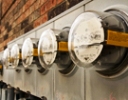
California and Massachusetts Lead Energy Efficiency, ACEEE Says
States across the United States achieved major new strides in energy efficiency, according to the http://www.aceee.org/research-report/e107 2010 State Energy Efficiency Scorecard (registration required) from the nonprofit and independent American Council for an Energy-Efficient Economy (ACEEE).
Among the major advances highlighted in the fourth edition of the ACEEE Scorecard are:
- a near doubling of state energy efficiency budgets from 2007 spending levels;
- the adoption or active consideration by over half the states of Energy Efficiency Resource Standards (EERS) that establish long-term, fixed efficiency savings targets; and
- a one-year doubling of the number of states that have either adopted or have made significant progress toward the adoption of the latest energy-saving building codes for homes and commercial properties.
The key state-specific rankings follow:
- The most improved states – Utah (tied for No. 12, up 11 spots from 2009), Arizona (No. 18, up 11 spots), New Mexico (No. 22, up eight spots), and Alaska (No. 37, up eight spots) – climbed at least eight spots since the 2009 Scorecard. In general, the Southwest region demonstrated considerable progress from 2009 to 2010.
- California retained its No. 1 ranking for the fourth year in a row. The balance of the top 10 states are Massachusetts, Oregon, New York, Vermont, Washington, Rhode Island, Connecticut, Minnesota, and Maine.
- The 10 states with the most room for improvement are: Louisiana, Missouri, Oklahoma, West Virginia, Kansas, Nebraska, Wyoming, Alabama, Mississippi, and North Dakota.
ACEEE Executive Director Steven Nadel said: “Even as Washington dawdles on climate and clean energy, states are moving ahead with considerable vigor on these vital matters, with energy efficiency initiatives leading the way. In particular, states are moving forward and advancing energy efficiency policies and programs in an effort to create jobs and stimulate their economies during a period of considerable economic uncertainty. While $11 billion in American Recovery and Reinvestment Act funds was helpful in this process and there were setbacks in a few states, the overall story here is one of states getting done what Congress has so far failed to do.”
In other major findings:
- Texas and New Hampshire each dropped nine spots.
- State budgets for energy efficiency in 2009 are almost double the level of spending in 2007, increasing from $2.5 billion to $4.3 billion. Reported electricity savings from energy efficiency programs across all states increased 8 percent between 2007 and 2008 (the most recent available data).
- 27 states have adopted or have pending Energy Efficiency Resource Standards (EERS) that establish long-term, fixed efficiency savings targets – double the number of states in 2006. These states account for two-thirds of electricity sales in the United States.
The ACEEE report provides a comprehensive assessment of policy and programs that improve energy efficiency in homes, businesses, industry, and transportation sectors. The scorecard examines six state energy efficiency policy areas and presents these results in six chapters: (1) utility and public benefits programs and policies; (2) transportation policies; (3) building energy codes; (4) combined heat and power; (5) state government initiatives; and (6) appliance efficiency standards. States can earn up to 50 possible points in these six policy areas combined, with the maximum possible points in each area weighted by the magnitude of its potential energy savings impact.